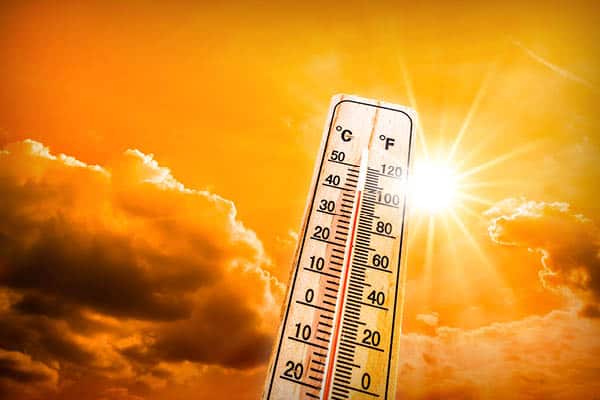2022 marked the nation’s third-hottest summer on record, with several states seeing record-breaking temperatures stretch into September, according to Education Week. Schools across the country—in Philadelphia, Baltimore, Cleveland, Denver, and San Diego, among others—closed due to excessive heat. In Columbus, Ohio, teachers went on strike demanding air conditioning in classrooms.
Experts claim as climate change accelerates, temperatures will continue to rise well into the school year, including in regions that aren’t used to hot weather. Many schools don’t have air conditioning units that are equipped to cope with sweltering heat. And a body of research shows that hot classrooms are detrimental to student learning.
“Schools are not prepared for the extreme heat, and we need to change that now,” says Jonathan Klein, the co-founder of UndauntedK-12, a national nonprofit supporting climate action in public schools that tracks school closures due to heat and other extreme weather.
How does heat affect student learning and well-being?
Heat makes it harder for students to learn. Students perform worse on tests when they’re hot, according to multiple studies by economists R. Jisung Park and Joshua Goodman, among others.
One study tracked 10 million secondary students who took the PSAT, a standardized exam used to identify students for college scholarships, multiple years between 2001 and 2014. The researchers found that a 1 degree hotter school year reduced that year’s learning by 1 percent.
The effect was three times more damaging for Black and Hispanic students than for white students, that study found. A similar discrepancy was found for students from low-income households compared to their affluent peers.
Students from low-income households are 6.2 percent more likely than their more affluent counterparts to be in schools with inadequate air conditioning, the study found, and Black and Hispanic students are 1.6 percent more likely than white students to learn without air conditioning.
Another study analyzed data from 4.5 million New York City high school exit exams to find students scored significantly lower on the standardized state test on a 90-degree day than on a 72-degree day. A separate recent study that examined data on state exams for 3rd to 8th graders found the impact of heat on mathematics achievement is about three times larger than its impact on achievement in English/language arts.
Educators say students can be unmotivated and distracted when sitting in a hot classroom. And other research shows that cognitive function declines during excessive heat, leading to slower reaction times on assessments.
The ideal temperature range for effective learning in reading and mathematics is between 68 and 74 degrees Fahrenheit, according to a research report by Pennsylvania State University’s Center for Evaluation and Education Policy Analysis.
One study, conducted in 2004 and 2005 on two classes of 10- to 12-year-old children, found that student performance on two numerical and two language-based tests improved significantly when the classroom temperature was reduced from 77 to 68 degrees Fahrenheit.
Addressing the air conditioning crisis in schools will cost tens of billions of dollars. Schools can mitigate the heat through other infrastructure choices. For example, when it’s time to replace a school’s roof, white roofing can lower the building’s temperature by several degrees. If there’s an opportunity to revamp the playground, avoid black rubber, which gets very hot. Planting trees on school grounds can provide natural shade and cool the air around them.
When decisions are made that deal with infrastructure in schools—roofs, windows, playgrounds, trees—any of these things can affect the temperature of the school.
Education Week





